New JavaScript Operator (?=) is an Absolute Game Changer
TLDR: The new safe assignment operator (?=) revolutionizes JavaScript error handling, enabling cleaner, more readable code without deep nesting or excessive try-catch blocks.
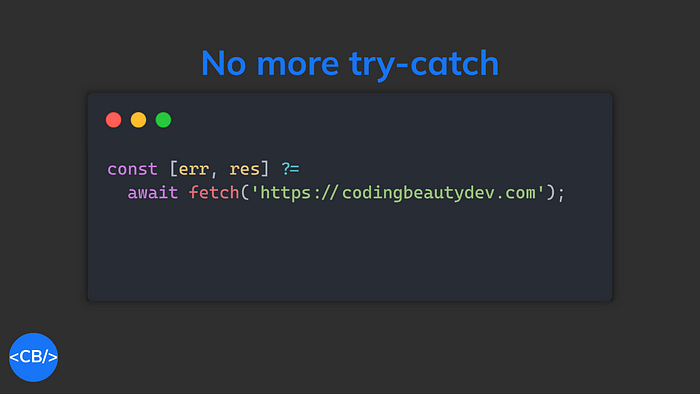
A remarkable new JavaScript operator has emerged, transforming the approach to error handling!
With the safe assignment operator, redundant patterns can be avoided:
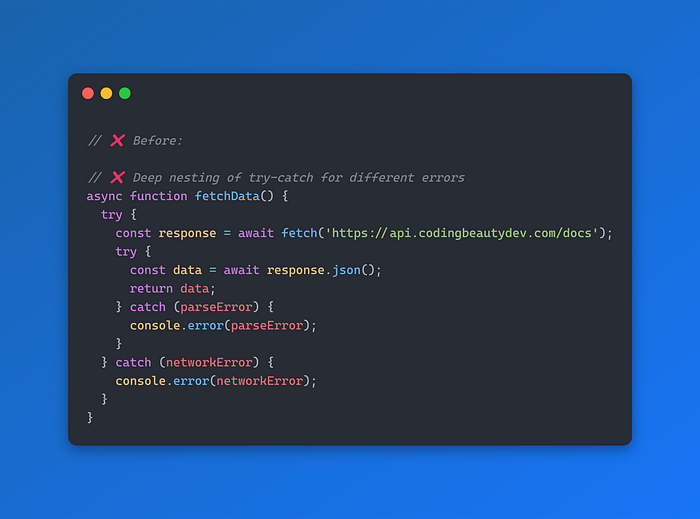
This allows for more straightforward coding:
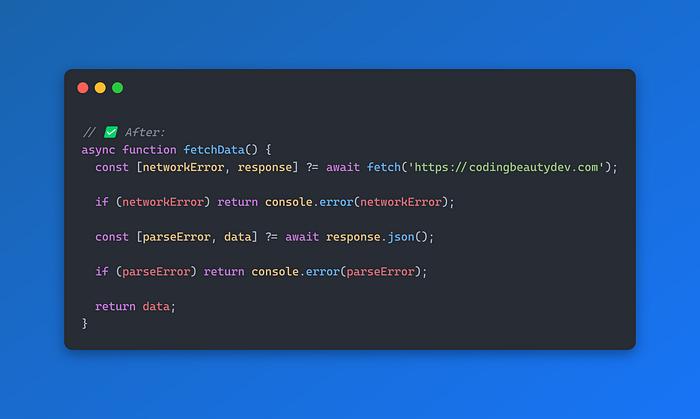
Deep nesting is eliminated, resulting in significantly cleaner and more readable code.
Instead of encountering errors in cumbersome catch blocks:

All operations can now be executed in a single line.
Rather than loudly failing, ?= silently manages errors, allowing for flexible responses.
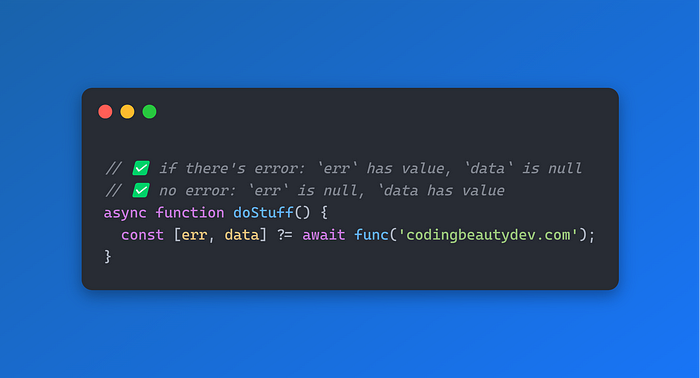
Responses can vary:
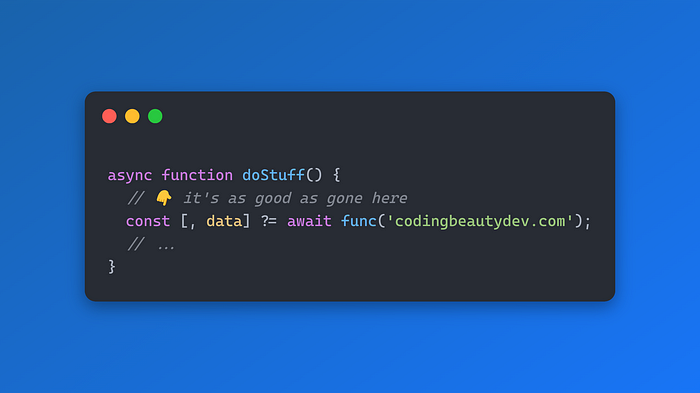
Errors can be reported without disrupting the flow:
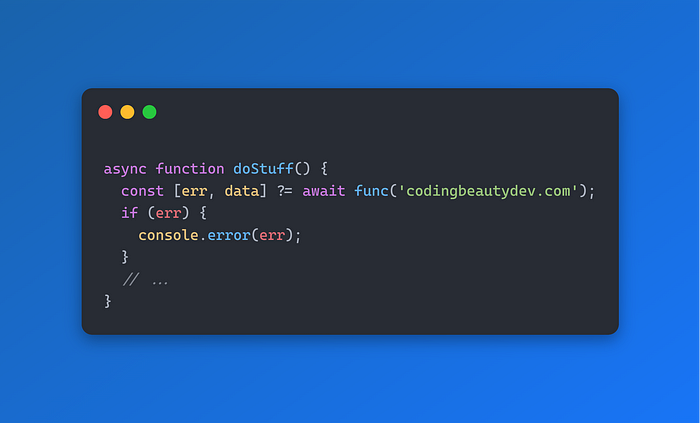
Or the process can be halted immediately:
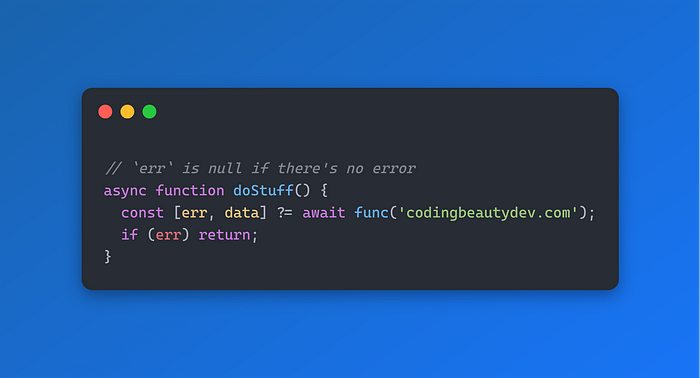
This feature proves to be a powerful tool for creating guard clauses:
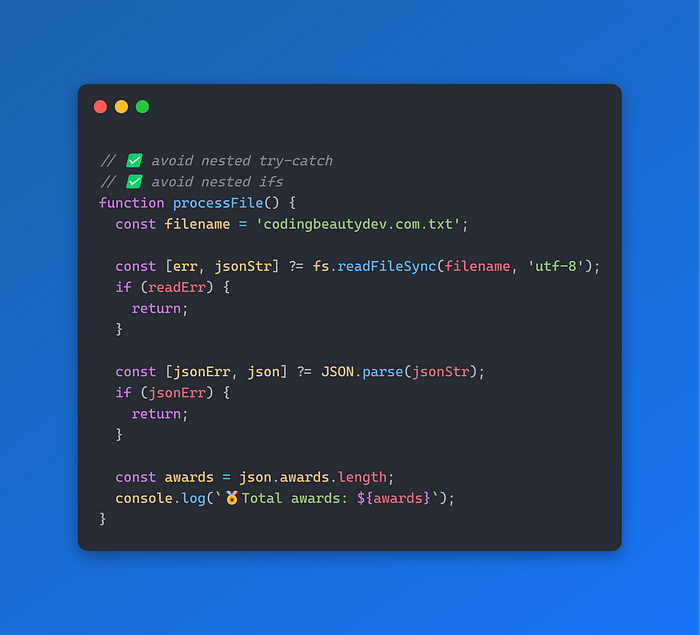
One of the most advantageous aspects of this operator is its capability to manage values depending on the presence of exceptions.
Typically, a mutable variable outside the scope would be utilized for error-free access:
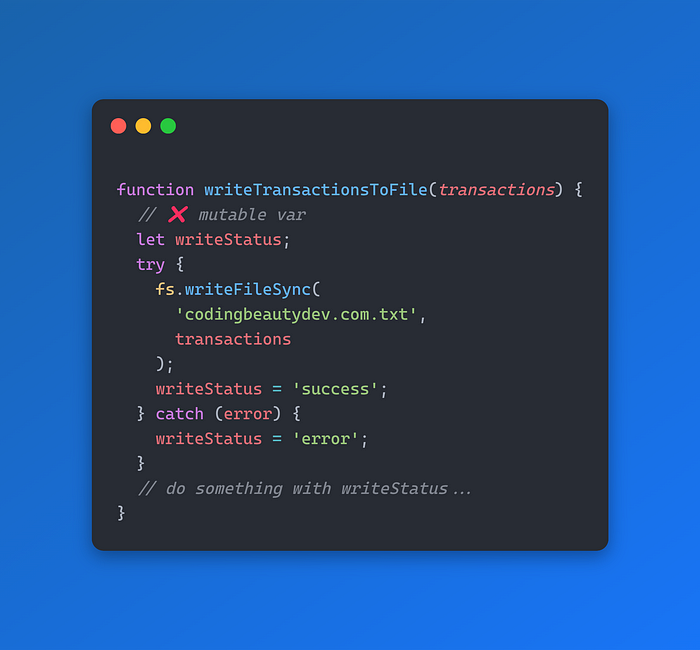
This approach can lead to frustration, particularly when striving for immutability and the variable was previously declared as const.
In the past, it required wrapping in a try, removing const, declaring let outside, and reassigning within catch.
With ?=:

Immutability is preserved, leading to more intuitive code, while eliminating all nesting.
How does it work?
The new ?= operator calls the Symbol.result method internally.
When executing this:
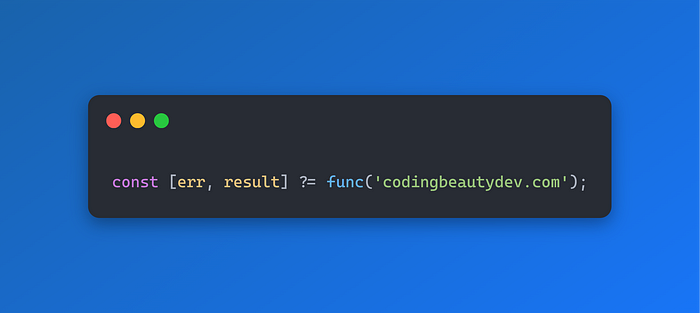
The following occurs:
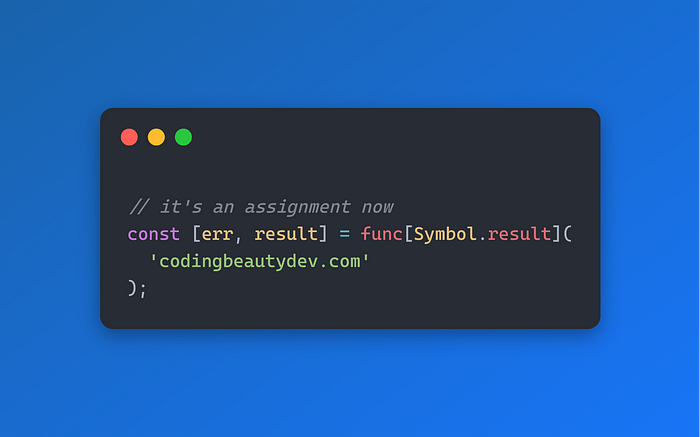
This implies compatibility with ANY object implementing Symbol.result:
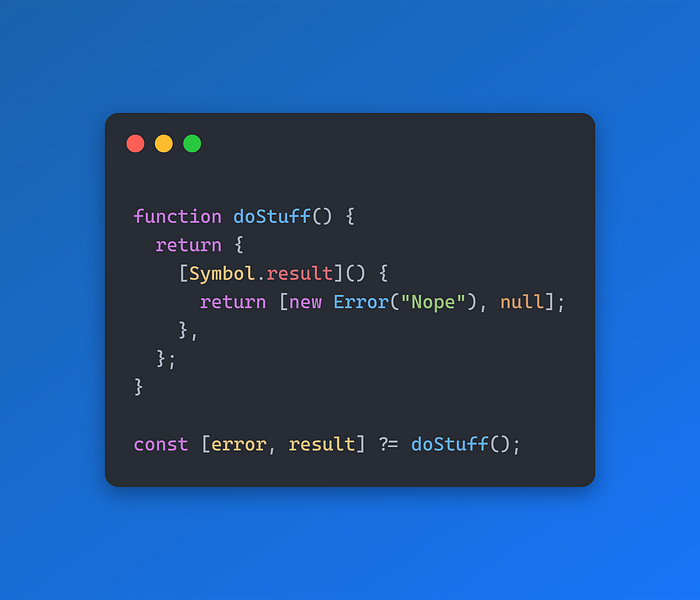
Throwing errors remains an option:
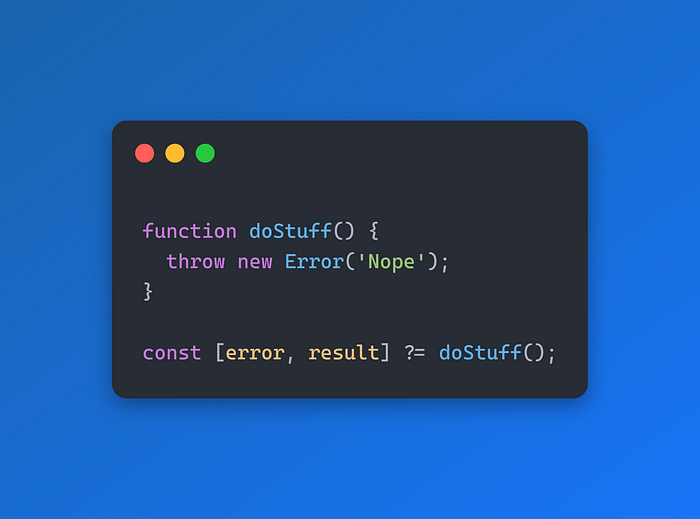
A notable feature is that if result has its own Symbol.result method, ?= will drill down recursively:
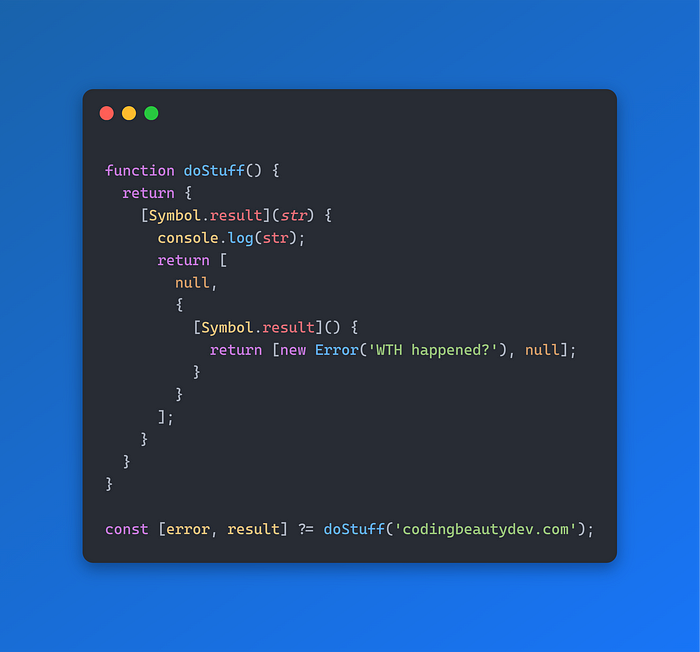
Direct usage of the object instead of returning from a function is also possible:
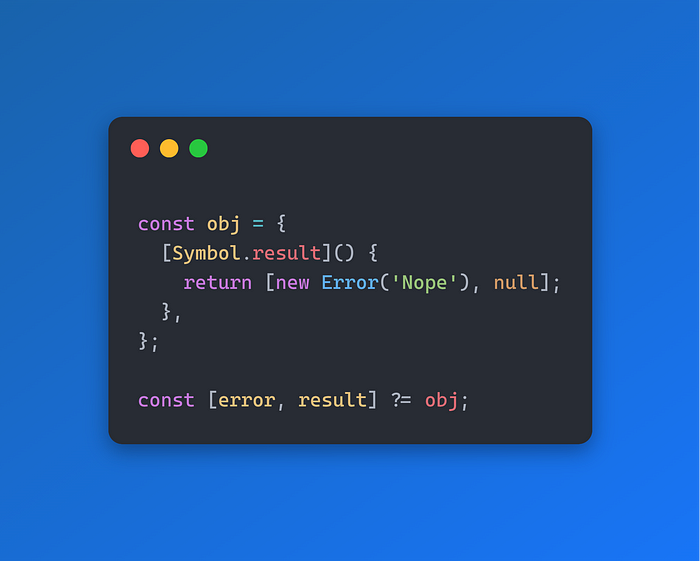
Its versatility allows for seamless integration with both standard and awaited functions:
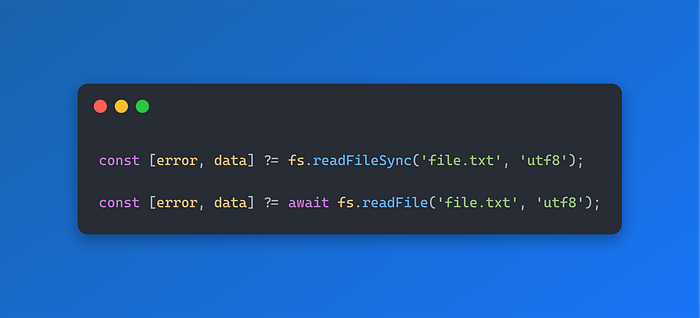
Using
The ?= operator is compatible with the TypeScript **using** keyword for automatic resource cleanup after use.
❌ Before:
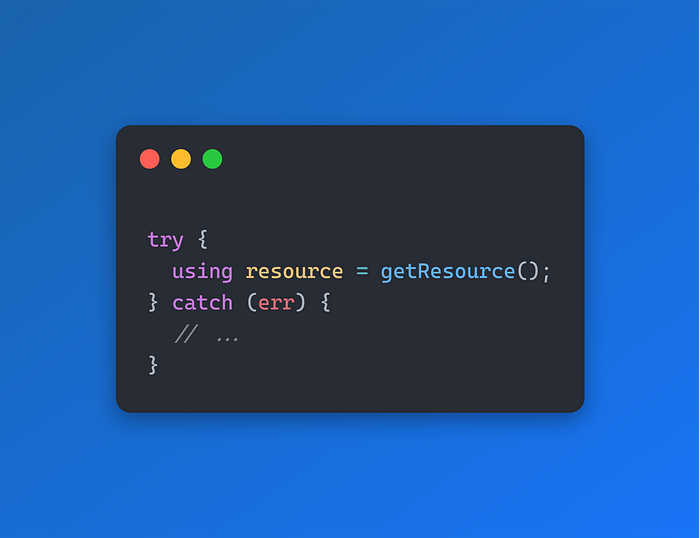
✅ After:
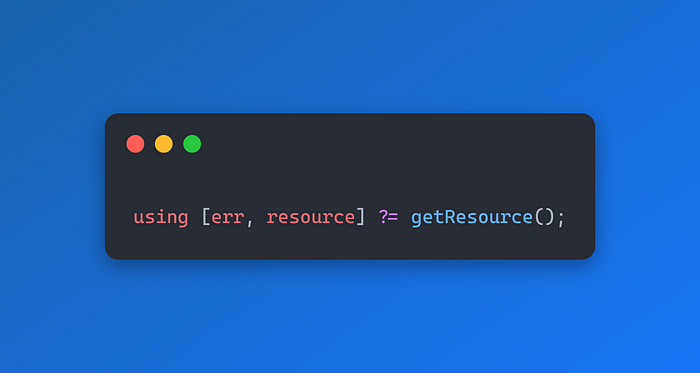
How to use it now
While waiting for native integration of ?= in JavaScript, it can be implemented now using this polyfill:
Direct usage isn’t possible—Symbol.result will be required:
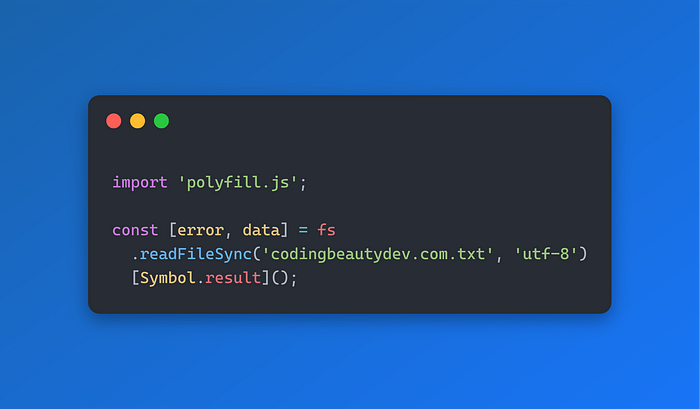
Final thoughts
JavaScript error handling has become much more readable and intuitive with the introduction of the safe assignment operator (?=).
Utilize this operator to write cleaner and more predictable code.
Ref: Tari Ibaba - Medium